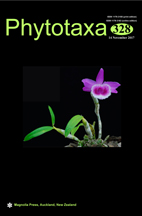Abstract
To aid in formulating conservation strategies for protection of species in mountainous regions, we studied the distribution of endemic vascular plants of northeastern Mexico’s Sierra Madre Oriental physiographic province, a massive mountain system in which different types of climate, vegetation, topography, and sedimentary soil converge. The information used in our five-year study was gathered from databases of national and international herbaria, as well as from botanical studies and floristic inventories conducted in the study area. We corroborated the nomenclature and geographical distribution of each species in the databases. A total of 1,135 species of endemic vascular plants from 369 genera and 88 families, including 177 infraspecific categories and one hybrid, were recorded in this study. The families with the most species and genera are Asteraceae (232 species, 75 genera), Cactaceae (170, 26), Fabaceae (66, 19) and Lamiaceae (66, 10). The genera with the most species are Mammillaria (43), Turbinicarpus (40), Agave (20), Salvia (20), Sedum (20) and Pinguicula (19). The families with the largest number of endangered species are Cactaceae, Zamiaceae, Pinaceae, and Fagaceae. Endemic species were most abundant in vegetation of temperate regions (554 endemic species) and in zones with dry climates or chalky soils (a total of 380 species for the two types of zones combined). The principal endemism-promoting attributes of the Sierra Madre Oriental may be its location, climate, physiography, soil types, geological age, karstic landscape, and wide range of elevations.

